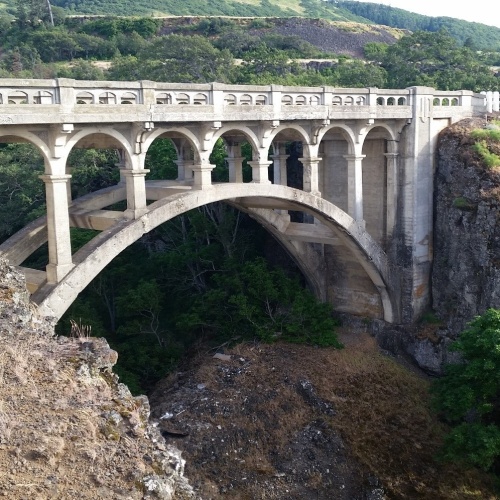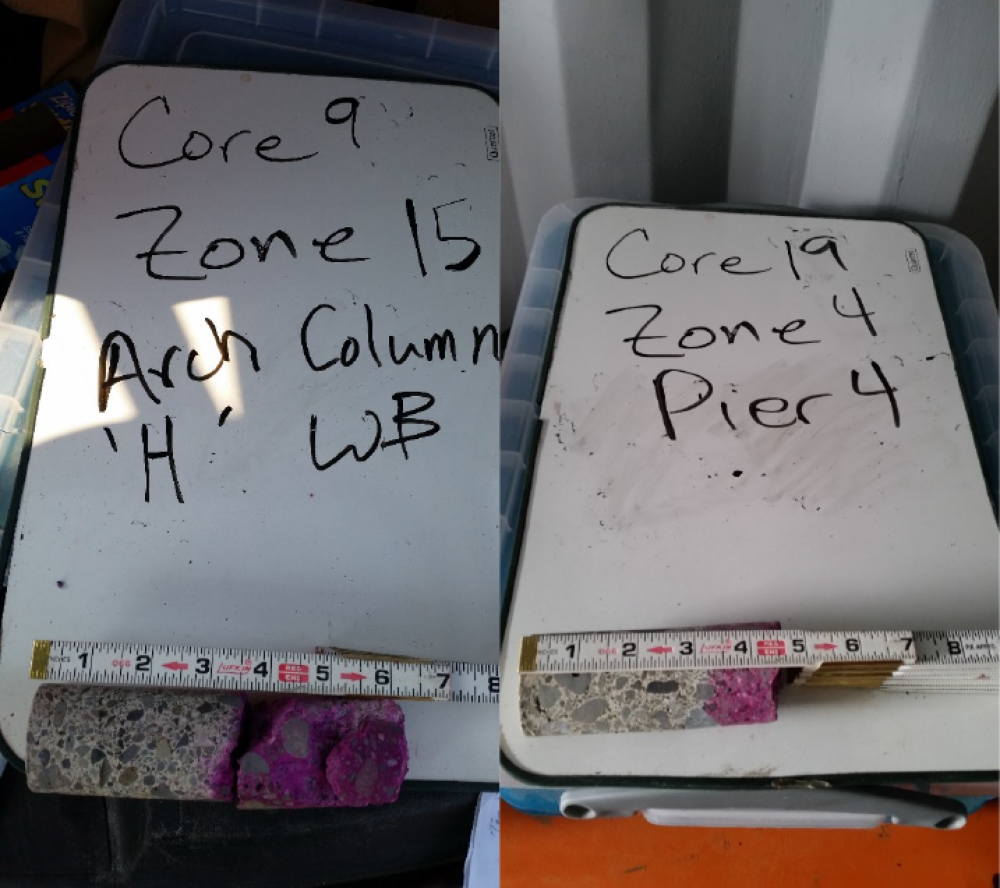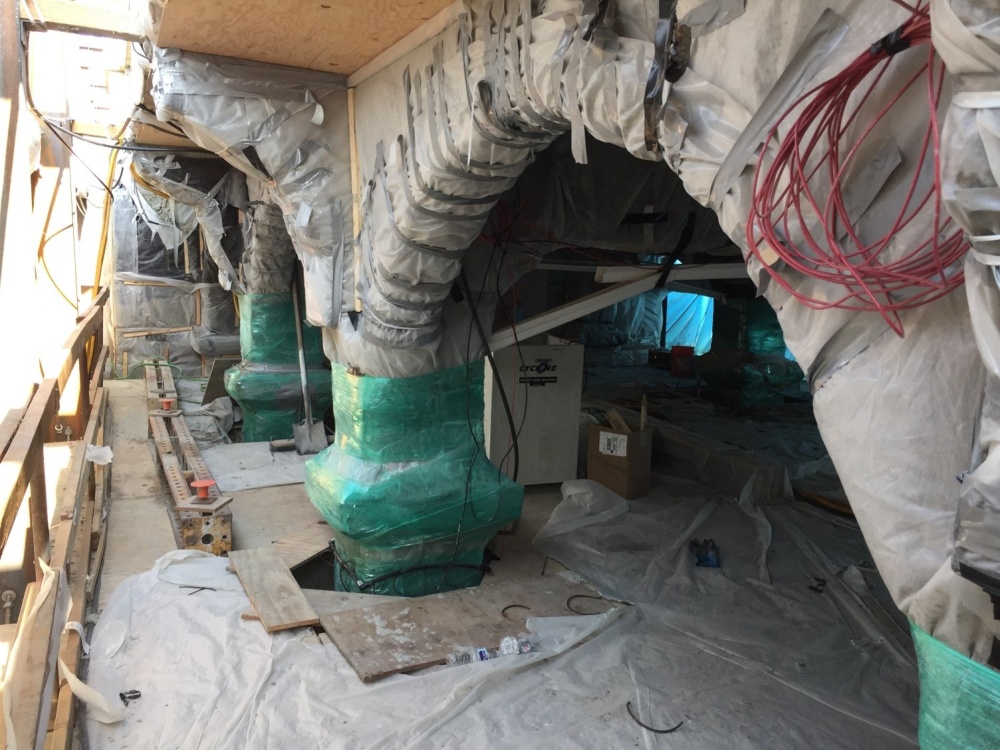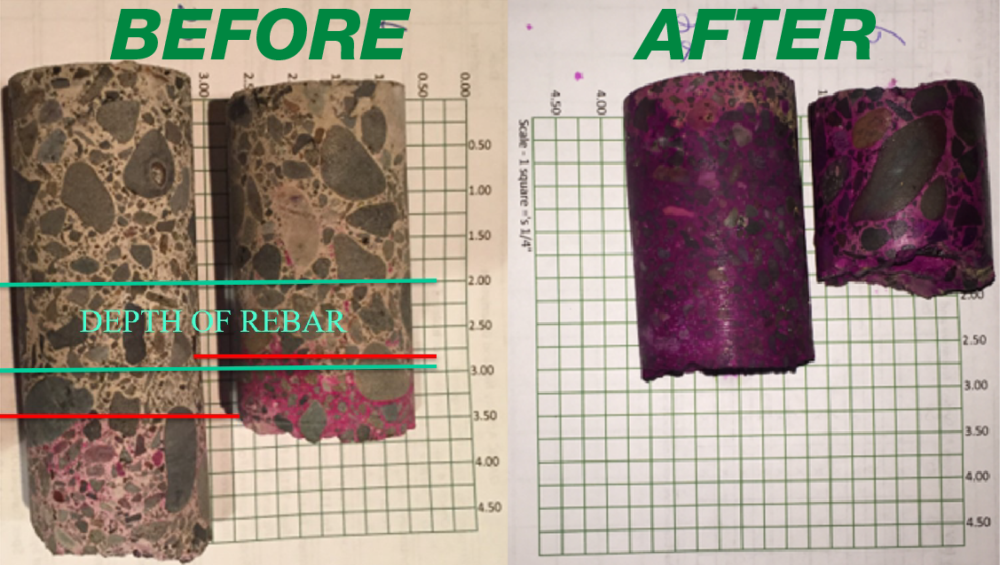Mosier Creek Bridge and Dry Canyon Creek Bridge

The Mosier Creek and Dry Canyon Creek bridges were built in 1920 and 1921, and 182 and 101 feet long, respectively.
The Problem
Over their nearly 100-year lifespan, significant carbonation reached the depth of reinforcing. Carbon dioxide had penetrated the concrete, reacted with the hydroxides, and formed carbonates. When concrete carbonates the pH decreases to 10 or less and creates an environment where corrosion of the reinforcing steel can occur. Randomly sampled concrete cores taken on the bridges were tested with phenolphthalein, a pH indicator, which confirmed that carbonation had taken place down the depth of the rebar. Vector was contacted by ODOT to develop a repair procedure that would maximize service life and meet the other project requirements.

Our Solution
Norcure® Re-alkalization is a treatment that restores the alkalinity of carbonated concrete and reinstates the passivity of steel reinforcement. Re-alkalization is carried out by temporarily applying an electric field between the reinforcement in the concrete and an externally mounted anode mesh.
During the process an alkaline electrolyte, such as sodium or potassium carbonate solution, is transported into the concrete, increasing the alkalinity of the cover zone and the concrete surrounding the reinforcing steel. This process returns the steel reinforcement to a long-term passive, non-corroding condition.

The Result
The concrete and environment around the steel are much closer to its original state as the higher pH and increase of the hydroxyl layer around the reinforcing steel created an environment where future corrosion is much less likely to occur. Both will greatly increase the service life with minimal environmental impact.

Technology Used
These innovative products and technologies were used on this project.